Categories
Medical
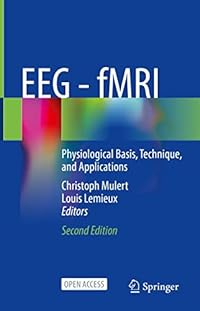
EEG - fMRI: Physiological Basis, Technique, and Applications
Christoph Mulert
This book provides the most up-to-date and comprehensive source of information on all aspects of EEG-fMRI, a neuroimaging technique for synchronous acquisition of electroencephalography (EEG) and functional magnetic resonance imaging (fMRI) data. The reader will find in-depth information on the physiological principles of the EEG and fMRI signals, practical aspects of data measurement, artifact reduction, data analysis, and applications. All the main areas of the technique’s application are the subject of one or multiple sleep research, cognitive neuroscience, and clinical neurology and psychiatry. In addition to providing a thorough update, this second edition offers five entirely new chapters covering important areas of research that have emerged during the past 5 years, including noninvasive brain stimulation during fMRI, resting-state functional connectivity, real-time fMRI, and neurofeedback. Written by the most prestigious experts in the field, the text is enhanced by numerous high-quality illustrations. This book will be valuable for neuroradiologists, neuroscientists, physicists, engineers, electrophysiologists, (neuro) medical scientists, neurologists, and neurophysiologists. Chapter 30 is available open access under a Creative Commons Attribution 4.0 International License via link.springer.com.
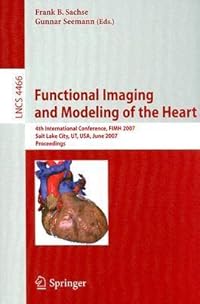
Functional Imaging and Modeling of the Heart: 4th International Conference, Salt Lake City, UT, USA, June 7-9, 2007
Frank B. Sachse
This book constitutes the refereed proceedings of the 4th International Conference on Functional Imaging and Modeling of the Heart, FIMH 2007, held in Salt Lake City, UT, USA in June 2007. The contributions describe both experimental and computational studies and cover topics such as imaging and image analysis, cardiac electrophysiology, electro- and magnetocardiography, cardiac mechanics and clinical application, imaging and anatomical modeling.
American Society for Artificial Internal Organs (ASAIO) Platinum 70th Anniversary Special Edition
Pramod Bonde
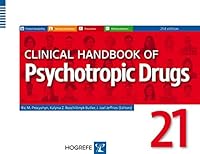
Clinical Handbook of Psychotropic Drugs
Ric M. Procyshyn, Kalyna Z. Bezchlibnyk-Butler, J. Joel Jeffries
Fully updated and expanded, in full color with intuitive icons throughout, packed with new and expanded comparison charts, and with patient handouts as printable PDFs the classic reference to psychotropic medications is now more user-friendly than ever! The Clinical Handbook of Psychotropic Drugs has become a standard reference and practical tool for psychiatrists, psychiatric nurses, pharmacists, psychologists, physicians, and all mental health professionals. The new and fully updated 21st edition retains all the practical features for which the Clinical Handbook is - Independent, unbiased - Packed with unique comparison charts (dosages, side effects, pharmacokinetics,interactions...) that allow you to see at a glance which medication is the most suitable for each patient - Instantly recognizable icons and full color throughout, allowing you to find at a glance all the information you seek - The latest information on newly released drugs, adverse effects, approved indications - Succinct, bulleted information on all classes of available products (including US and Canadian trade names), on- and off-label indications (US FDA and Canada); pharmacology, dosing, pharmacokinetics; adverse effects, precautions, contraindications, toxicity; lab tests, precautions in young, old, andpregnant patients, nursing implications; drug interactions; patient instructions... all you need to know for each class of drug! - The latest information on Herbal and Natural Products, Unapproved Treatments, ECT,BLT, rTMS - Patient handouts as printable PDFs New in this - New chapter on pharmacogenomics - New Section with NbN (Neuroscience-based Nomenclature) classification of psychotropics - Substantial revisions of chapters on antipsychotics, BLT, rTMS, natural health products - Comparison chart outlining relative tolerability profiles of antipsychotics - Chart for laboratory and clinical monitoring of antipsychotics - Substantially revised comparison charts of agents for treating acute extrapyramidal side effects - Added new drugs and formulations - More information on unapproved treatments
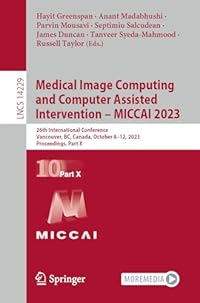
Medical Image Computing and Computer Assisted Intervention – MICCAI 2023: 26th International Conference, Vancouver, BC, Canada, October 8–12, 2023, ... X
Hayit Greenspan, Anant Madabhushi, Parvin Mousavi, Septimiu Salcudean, James Duncan, Tanveer Syeda-Mahmood, Russell Taylor
The ten-volume set LNCS 14220, 14221, 14222, 14223, 14224, 14225, 14226, 14227, 14228, and 14229 constitutes the refereed proceedings of the 26th International Conference on Medical Image Computing and Computer-Assisted Intervention, MICCAI 2023, which was held in Vancouver, Canada, in October 2023. The 730 revised full papers presented were carefully reviewed and selected from a total of 2250 submissions. The papers are organized in the following topical Part Machine learning with limited supervision and machine learning – transfer learning; Part Machine learning – learning strategies; machine learning – explainability, bias, and uncertainty; Part Machine learning – explainability, bias and uncertainty; image segmentation; Part Image segmentation; Part Computer-aided diagnosis; Part Computer-aided diagnosis; computational pathology; Part Clinical applications – abdomen; clinical applications – breast; clinical applications – cardiac; clinical applications – dermatology; clinical applications – fetal imaging; clinical applications – lung; clinical applications – musculoskeletal; clinical applications – oncology; clinical applications – ophthalmology; clinical applications – vascular; Part Clinical applications – neuroimaging; microscopy; Part Image-guided intervention, surgical planning, and data science; Part Image reconstruction and image registration.
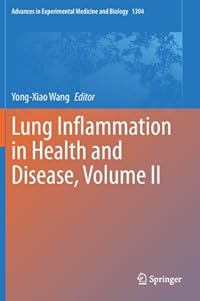
Lung Inflammation in Health and Disease, Volume II
Yong Xiao Wang
Lung diseases are leading causes of death and disability globally, with about 65 million people suffering from COPD, and 334 million from asthma. Each year, tens of millions of people develop and can die from lung infections such as pneumonia and TB. Systemic inflammation may induce and exacerbate local inflammatory diseases in the lungs, and local inflammation can in turn cause systemic inflammation. There is increasing evidence of the coexistence of systemic and local inflammation in patients suffering from asthma, COPD, and other lung diseases, and the co-morbidity of two or more local inflammatory diseases often occurs. For example, rheumatoid arthritis frequently occurs together with, and promotes the development of, pulmonary hypertension. This co-morbidity significantly impacts quality of life, and can result in death for some patients. Current treatment options for lung disease are neither always effective, nor condition-specific; there is a desperate need for novel therapeutics in the field. Additionally, the molecular and physiological significance of most major lung diseases is not well understood, which further impedes development of new treatments, especially in the case of coexistent lung diseases with other inflammatory diseases. Great progress has been made in recent years in many areas of the field, particularly in understanding the molecular geneses, regulatory mechanisms, signalling pathways, and cellular processes within lung disease, as well as basic and clinical technology, drug discovery, diagnoses, treatment options, and predictive prognoses. This is the first text to aggregate these developments. In two comprehensive volumes, experts from all over the world present state-of-the-art advances in the study of lung inflammation in health and disease. Contributing authors cover well-known as well as emerging topics in basic, translational, and clinical research, with the aim of providing researchers, clinicians, professionals, and students with new perspectives and concepts. The editors hope these books will also help to direct future research in lung disease and other inflammatory diseases, and result in the development of novel therapeutics.